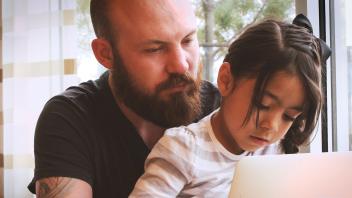A SMART IEP is an individualized education program that is: specific, measurable, filled with action words, realistic and relevant, and time-limited.
Measurable academic and functional goals
IEP goals should enable the child to learn the basic skills that are necessary for thechild to be independent and self-sufficient. These basic skills include:
- Communication skills
- Social skills and the ability to interact with others
- Reading skills
The child must learn to communicate. Most children communicate by expressive and receptive speech. Some children use assistive technology to communicate. The child must learn social skills so he or she can interact with other people. Finally, the child must learn to read. Reading is the gateway to all other knowledge.
The IEP should:
- Meet the child’s academic, development, and functional needs that result from the disability;
- Enable the child to be involved in and progress in the general curriculum;
- Meet each of the child’s other educational needs that result from the child’s disability.
IEP goals cannot be broad statements about what a child will accomplish in a year, but must address the child’s academic achievement and functional performance. The IEP must identify all the child’s needs, how the school will meet these needs, and how the school will measure the child’s progress.
If the IEP is based on the child’s present levels of academic achievement and related developmental needs, addresses the child’s academic and functional needs, and includes research validated instructional methods, the IEP should pass muster under IDEA 2004.
If the IEP does not include measurable academic and functional goals, the IEP is defective and open to a challenge that it denies the child a FAPE.
SMART IEP goals and objectives
Write down several statements about what you want your child to know and be able to do. Revise these statements into goals that are specific, measurable, use action words, are realistic, and time-limited.
Break down each goal into a few measurable short-term steps. Describe what the child will know or be able to do. Focus on behavior that you can count or observe.
How will you know if your child is achieving these goals? Your child’s progress should be assessed objectively and often. If your goals are measurable, you will be able to observe the child’s behavior.
Here is a SMART IEP goal for a child who needs to learn to type:
- At the end of the first semester, Mark will touch-type a passage of text at a speed of 20 words per minute, with no more than 10 errors, with progress measured on a five-minute timed test.
- At the end of the second semester, Mark will touch-type a passage of text at a speed of 40 words per minute, with no more than 5 errors, with progress measured on a five-minute timed test.
This SMART goal is specific, measurable, and time-limited. It focuses on Mark’sneed to learn the functional skill of typing. You can measure Mark’s progress by observinghis typing speed and accuracy.
Short-term objectives
In IDEA 2004, Congress eliminated requirements for short-term objectives and benchmarks in IEPs for students with disabilities, except for students who take alternate assessments.
By eliminating short-term objectives and benchmarks, Congress made teachers’ jobs more difficult. Annual goals will have to be far more comprehensive than they were under IDEA 1997. Since short-term objectives and benchmarks were eliminated, this information will now have to be included in the annual goals.
Eliminating short-term objectives creates as many problems for educators as it does for parents. Short-term objectives and benchmarks are steps that measure the child’s progress toward the annual goals in the IEP. When written correctly, short-term objectives provide teachers with a roadmap and a clear mechanism to evaluate the child’s progress.
Pitfalls
As a parent, you must be vigilant. The danger is that the IEP team will propose annual goals that are not specific and measurable, do not meet the child’s academic and functional needs, and do not describe how the child’s progress will be measured.
Teachers will have to work harder and think more creatively to ensure that the annual goals address all the child’s educational needs and that the goals are written in clear, measurable language.
Advising parents about child's progress
Did you know that the school must inform you about your child’s educational progress at regular intervals? In fact, your child’s IEP must include: a description of how the child’s progress toward meeting the annual goals — will be measured and when periodic reports on the progress the child is making toward meeting the annual goals (such as through the use of quarterly or other periodic reports, concurrent with the issuance of report cards) will be provided.
Reviewing and revising the IEP
As your child grows and changes, the child’s educational needs will also change. The IEP team must meet at least once a year to review the child’s IEP and determine whether the annual goals for the child are being achieved. The IEP team is to revise the IEP to address
- any lack of expected progress toward the annual goals and in the general education curriculum, where appropriate
- the results of any reevaluation
- information about the child provided to, or by, the parents
- the child’s anticipated needs
- other matters
